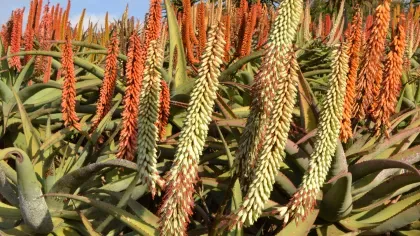Managing diabetes with medicinal plants
Peter Giovannini examines the potential of medicinal plants to provide cost-effective and culturally appropriate management of diabetes in Central America.

The diabetes pandemic
The prevalence of diabetes has been increasing worldwide, especially in Middle Income Countries (MICs) where access to the healthcare needed for its prevention and treatment is often limited.
The World Health Organisation (WHO) recently published a Global Report on Diabetes, which highlighted that the global prevalence of diabetes (currently 8.5% for both type one and type two diabetes) nearly doubled between 1980 and 2014.
Diabetes has a considerable impact on the health of individuals, national economies and society as a whole. In 2012 diabetes and high blood glucose caused 3.7 million deaths, and cost an estimated 827 billion US dollars globally. Cost-effective solutions to prevent and manage diabetes are therefore needed urgently.
Local use of medicinal plants: type two diabetes
Several ethnobotanical studies have reported the local use of plants to manage type two diabetes. In many instances, these studies were conducted among indigenous people, who have a particularly high incidence of diabetes, and often lack access to conventional healthcare. This raises the question of whether scientific evidence supports the use of these plants to manage diabetes, and if such herbal medicines could be better integrated into health care systems.
Medicinal plants to manage diabetes in Central America
In a recent study we aimed to determine which herbal remedies are traditionally and currently used to manage diabetes in Central America, and to what extent scientific evidence supports their local use. The population of Central America, which includes a large indigenous population, has a strong tradition of using herbal remedies. The total prevalence of diabetes in the region is currently 8.5%. This figure is likely to increase due to the high percentage of young people in the population, because the risk of developing the disease increases significantly with age.
We started by conducting a literature review of previous studies on medicinal plants in Central America (Belize, Costa Rica, El Salvador, Guatemala, Honduras, Nicaragua and Panama; all middle-income countries according to the World Bank definition). From this, we compiled information on species used to manage diabetes or conditions that may arise from diabetes, creating a database. Importantly, we also noted which plant parts were used medicinally, because the uses and properties for different parts of the plants may vary.
We then looked into whether there was any scientific basis that might explain the local uses of the selected plant species. We did this by searching literature for information on plant chemistry, pharmacology, and clinical studies investigating their medicinal uses in humans.
More than 100 species used to manage diabetes in Central America
We found 104 plant species used to manage diabetes in Central America but only seven of these species were reported independently in at least three different studies. These seven species were: Momordica charantia L., Neurolaena lobata (L.) R. Br. ex Cass, Tecoma stans (L.) Juss ex Kunth, Persea americana Mill., Psidium guajava L., Anacardium occidentale L., and Hamelia patens Jacq.
We also found that several species used to manage diabetes were also used to treat conditions that may develop as a consequence of diabetes. For example, there are reports on the traditional use of M. charantia for kidney and skin conditions that may be associated with diabetes.
Available pharmacological studies provide some rationale to explain the local uses of M. charantia L. For example, some laboratory tests showed that extracts, including phytochemicals (triterpenoids) from the fruit and stems, may lower blood glucose.
However, more extensive and robust scientific studies are needed to further understand the traditional and potential uses of medicinal plants and their constituent phytochemicals. In particular, clinical trials in humans are needed, using standardised plant extracts that contain known levels of the most relevant phytochemicals.
Towards the 2030 sustainable development agenda
The 2030 Agenda for Sustainable Development lists targets that include achieving universal health coverage and providing access to affordable essential medicines (SDA 2030 Goal 3). Medicinal plants currently play an important role in meeting the health care needs of many people around the world. According to WHO, up to 80% of the population in some regions of the world use traditional medicines for health care. There may still be a large untapped potential to increase the sustainable use of medicinal plants to provide cost-effective medicines.
Our review of medicinal plants used for managing diabetes in Central America shows that medicinal plants are currently contributing to the provision of low cost and culturally appropriate health care in this region. It is also important, however, to gain a better understanding of their effectiveness and safety, and to be able to fully understand their potential as part of a cost-effective and sustainable approach to healthcare.
References
Giovannini, P., Howes, M.-J.R. & Edwards, S. (2016). Medicinal plants used in the management of diabetes and its sequelae in Central America: a review. Journal of Ethnopharmacology 184, 58 – 71. Available online


